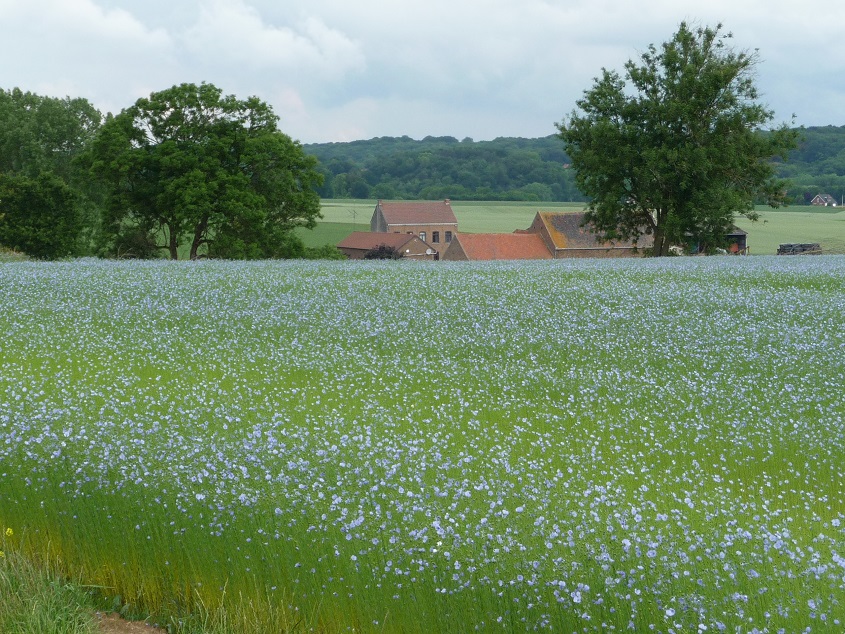A waterfront walkway in Kortrijk leads to the relocated Texture museum. Now based in a vast former warehouse, the museum is dedicated to the local flax industry. Boring, you might be thinking, but you’d be wrong.
The museum brings the story of flax to life with an creative mix of touch screens, video interviews, historic photographs, microscopes, scanners and fabrics you can touch.
It soon becomes clear that Kortrijk owes its wealth to flax. This exceptional crop flourishes in the damp, mild climate along the River Lys, flowering just one day a year. Cultivated since the Middle Ages, it provides the raw material for linen fabric, as well as ropes, tents, mailbags and construction material. And the linseed oil from flax was used by Van Eyck to develop oil painting, the museum explains.
The flax growers were originally local farmers who cultivated the crop in their fields. They became fabulously rich from this commodity, known as Courtrai flax, which produced the finest quality linen. The River Lys eventually became known as “the Golden River”.
The museum screens a video that shows the owner of a flax warehouse near Kortrijk holding up a U.S. dollar bill. ‘The banknote comprises 75 per cent cotton and 25 per cent flax from Kuurne, near Kortrijk,’ he explains.
Derek Blyth’s hidden secret of the day: Derek Blyth is the author of the bestselling “The 500 Hidden Secrets of Belgium”. He picks out one of his favourite hidden secrets for The Brussels Times every day.

